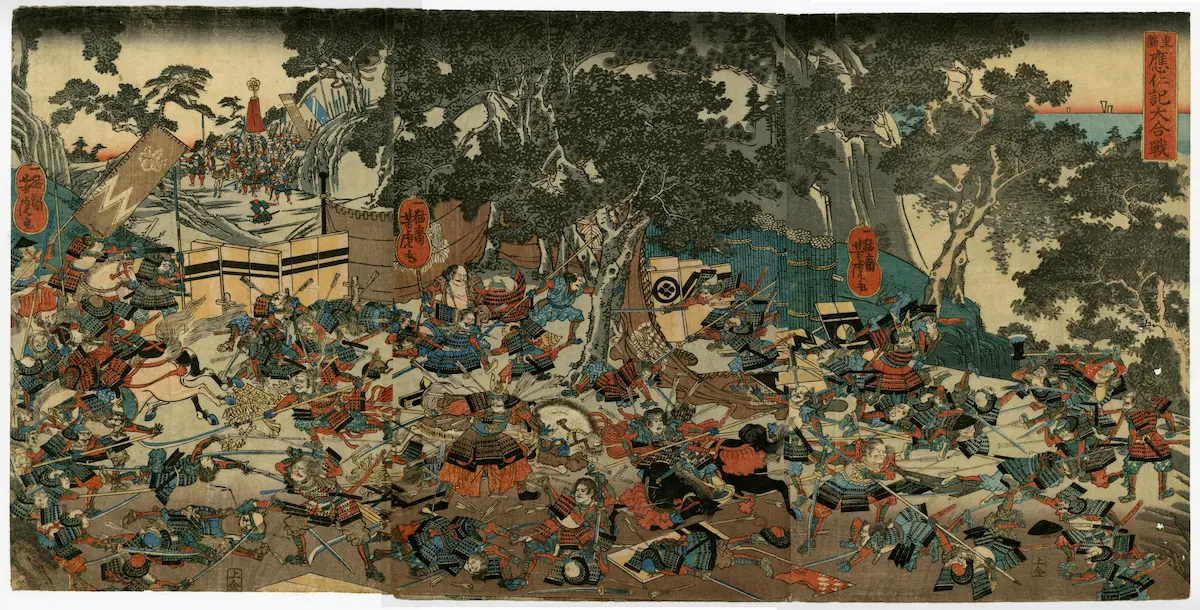The Ōnin War (1467-1477), also known as Ōnin-Bunmei war, gave rise to Japan’s Sengoku (Warring States) period. It started with a shogunate succession dispute and escalated into a fierce conflict between the Eastern and Western Armies. Despite its intensity, the war ended without a clear victor.
The war led to the decline of the shogunate and the rise of powerful daimyo, ushering in an era of widespread warfare and social transformation in the history of Japan.
Key Takeaways
- The Ōnin War was triggered by a succession crisis within the Ashikaga Shogunate, leading to a decade-long civil war from 1467 to 1477.
- Key battles took place in and around Kyoto (the capital city then), involving evenly matched Eastern and Western Armies, leading to a prolonged and destructive stalemate.
- The war resulted in the weakening of the shogunate and the rise of independent daimyo, setting the stage for the chaotic Sengoku period.
- This period saw the emergence of “Gekokujo,” where lower-status individuals and groups overthrew their superiors, reshaping Japan’s feudal structure.
- Despite the devastation, the era witnessed cultural developments and the rise of new social and economic forces in Japan.
Prelude to Ōnin War
Background
Under Ashikaga Yoshimasa, the eighth Shogun, the Muromachi shogunate was characterized by a complex political system involving influential feudal lords or daimyo. These lords, each governing their provinces, played crucial roles in maintaining the delicate balance of power within the shogunate.
The Rise of Tensions
Ashikaga Yoshimasa, who lacked strong leadership skills, was easily manipulated by influential figures in the shogunate, including his wife, Hino Tomiko, and high officials like Hosokawa Katsumoto. His indulgence in cultural pursuits and neglect of administrative duties further weakened his authority, creating a power vacuum.
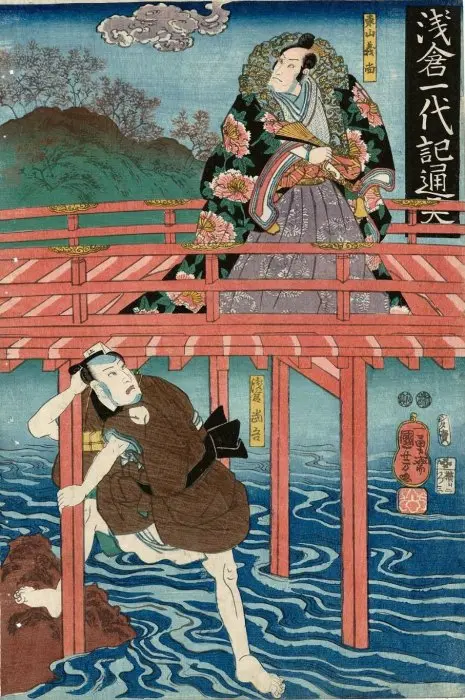
The shogunate’s instability was worsened by the divided rule system, where governors served dual roles as Kyoto bureaucrats and local overseers, leading to weakened authority in the provinces.
This system was further strained by succession conflicts within the shogunate and prominent feudal families, notably the Hatakeyama, Shiba, and Hosokawa clans.
The Succession Crisis
The immediate cause of the Ōnin War was a succession dispute following the birth of Yoshimasa’s son, Ashikaga Yoshihisa, in 1465. Yoshimasa had initially named his brother, Ashikaga Yoshimi, as his heir, but Yoshihisa’s birth led to a rift.
Two factions emerged: one supporting Yoshimi, backed by Hosokawa Katsumoto, and another supporting Yoshihisa, backed by Hino Tomiko and Yamana Sōzen.
Sparking the Conflict
The situation escalated when Yoshimasa transferred the headship of the Hatakeyama clan from Shiba Yoshitane to Shiba Yoshimasa, a move opposed by Yamana Sōzen.
Tensions mounted, and by January 1467, Kyoto became the epicenter of a brewing storm.
The political intrigue and shifting alliances set the stage for a full-blown civil war, marking the onset of the Ōnin War and the subsequent Sengoku period, a time of widespread conflict and social upheaval.
The Battles of Ōnin War
The Onin War, spanning a tumultuous decade from 1467 to 1477, was marked by fierce and strategic battles primarily centered in Kyoto. It involved the Eastern and Western armies, led by Hosokawa Katsumoto and Yamana Sōzen (Mochitoyo), respectively.
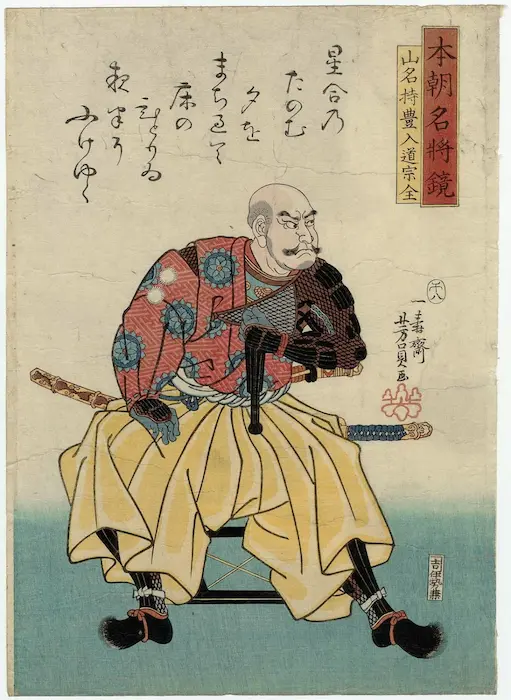
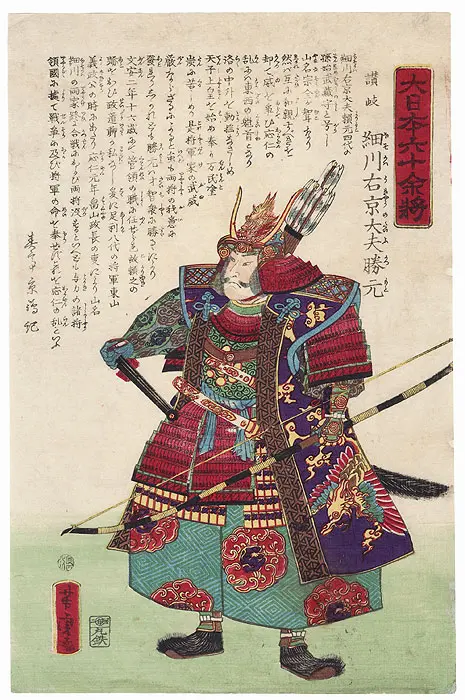
The War’s Outset
The conflict ignited in 1467 with a battle at Kamigoryo in Kyoto, signifying the war’s brutal onset. The Eastern Army, initially commanding the battlefield, secured the Shogun’s residence.
However, this early advantage was short-lived as the Western Army, under Yamana’s leadership, seized key positions across Kyoto, turning the tide of the war.
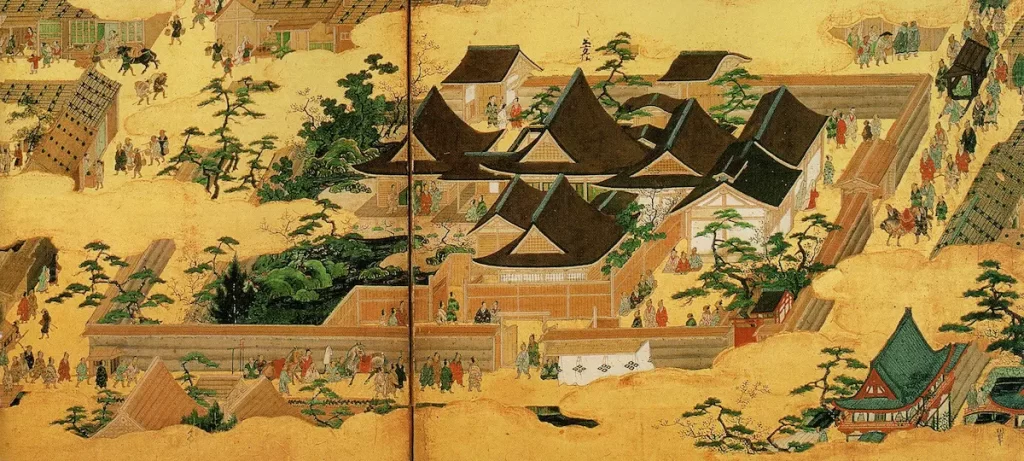
Stalemate and Strategies
The war quickly evolved into a prolonged stalemate, with both armies establishing control over different territories. The Eastern and Western armies, comprising about 85,000 and 80,000 troops respectively, were almost evenly matched.
This balance led to a series of calculated moves and countermoves, including strategic burnings, sieges, and fierce urban combat within Kyoto.
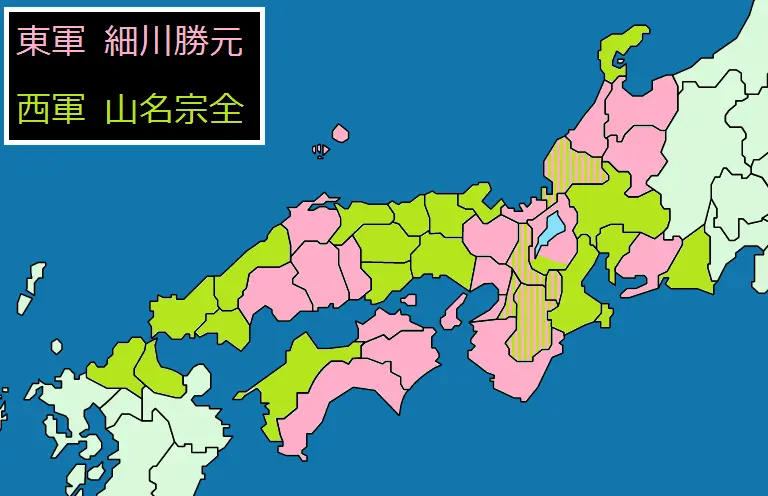
Pivotal Battles and Tactics
One notable engagement was the intense battle around the Kamigoryo Shrine, strategically positioned amidst dense forests and a river. This location became a focal point for military tactics involving burning of enemy strongholds and fortified positions.
The Eastern Army, strengthened by alliances and reinforcements like the Akamatsu troops, faced off against the Western Army, bolstered by figures like Ōuchi Masahiro and his 20,000 reinforcements.
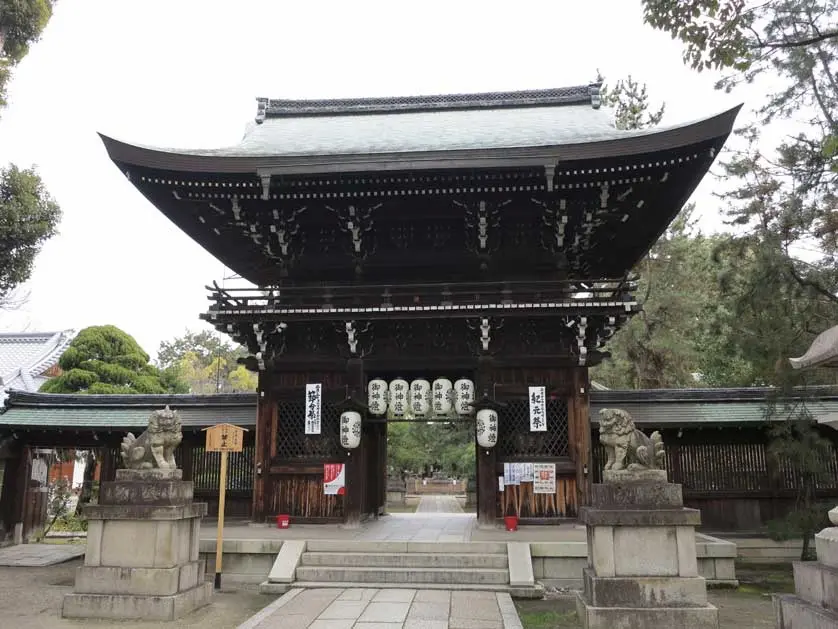
Widespread Impact
The war, although primarily fought in Kyoto, had broader implications. The continuous conflict led to battles spreading across various regions of Japan.
The prolonged and relentless nature of the Onin War not only decimated Kyoto but also reshaped Japan’s political landscape, with shifting allegiances and power struggles among the feudal lords.
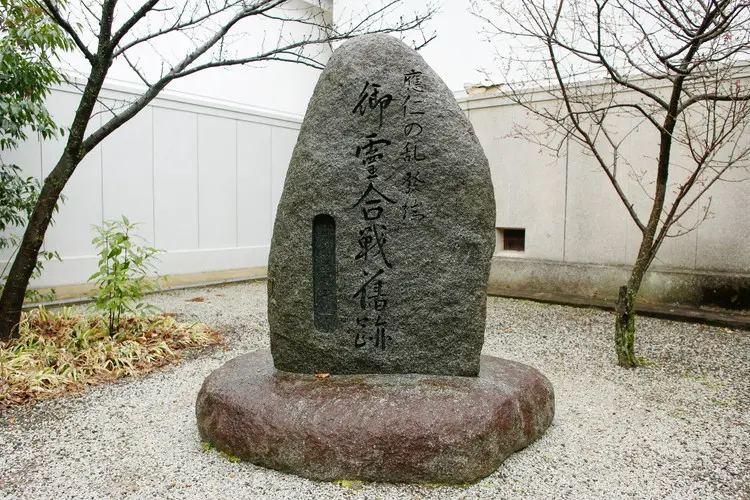
Aftermath of Ōnin War
Political Consequences
The end of the war marked the decline of the Ashikaga Shogunate’s authority. Neither the Hosokawa nor the Yamana clan achieved definitive victory, resulting in a weakened shogunate. The power of traditional authorities, including aristocratic warrior families and court nobles, diminished.
This power vacuum facilitated the rise of new forces, such as country samurai, merchants, and farmers, who started to gain rights and influence.
Rise of Daimyo and Gekokujo
The concept of “Gekokujo” (the lower overthrowing the upper) gained prominence, leading to the emergence of powerful figures and families, such as the Asakura and Oda clans, who transitioned from deputy roles to becoming influential feudal lords.
This shift was a precursor to the Sengoku period, characterized by constant warfare and territorial disputes among emerging daimyo.
Social and Economic Impact
The war had significant socio-economic repercussions. The prolonged conflict and the devastation of Kyoto led to a decline in the old manor system and the emergence of new economic and social structures.
There was a notable rise in peasant uprisings, such as the Yamashiro Ikki, reflecting the war-weary populace’s frustration with ongoing feudal conflicts.
Cultural Developments
Despite the chaos, this period witnessed notable cultural advancements. The East Mountain Culture, blending court, warrior, and Zen influences, emerged during this time.
Cities like Nara became significant cultural centers, signifying a shift in cultural development away from the war-torn capital.
Institutional Changes
The system of primogeniture for succession (the right of succession belonging to the firstborn child) still needed to be fully established.
This lack of a clear succession system led to continued internal conflicts within shogun and feudal lord families, known as “Oie Sodo” (family disturbances).
It later became a staple in Japanese feudal governance.
The Shogunate’s Decline
Post-war, the shogunate continued to lose its grip on power.
The weak and bifurcated governance system, where governors were both Kyoto bureaucrats and provincial overseers, failed to regain its former authority. The governors’ diminished power in the provinces led to the rise of local power brokers, who filled the power vacuum left by the weakened shogunate.
The aftermath of the Ōnin War set the stage for the turbulent Sengoku period, characterized by decentralized power, rising new classes, and significant cultural developments.
It marked the end of the medieval Japanese state structure and was a turning point in Japanese history.
Frequently Asked Questions
What was the Ōnin War?
The Ōnin War was a civil war in Japan from 1467 to 1477, marking the start of the Sengoku period, characterized by feudal conflict and social upheaval.
What caused the Ōnin War?
The Ōnin War was caused by a succession dispute within the Ashikaga Shogunate, coupled with underlying political tensions and power struggles among feudal lords.
What was the significance of the Ōnin War?
The significance of the Ōnin War lies in its initiation of the Sengoku period, a time of widespread warfare, the rise of daimyo (feudal lords or warlords), and significant social and cultural changes in Japan.
Who won the Ōnin war?
No clear victor emerged from the Ōnin War. It ended in a stalemate, leading to a weakened shogunate and a fragmented political landscape.
What effect did the Ōnin war have on Japan’s governance then?
The Ōnin War significantly weakened the Ashikaga Shogunate’s control, leading to decentralized governance and the rise of powerful regional daimyo, reshaping Japan’s feudal structure.
Further Readings
- A Concise History of Japan by Brett L. Walker
- Japanese Culture: A Short History by Paul Varley
- The Samurai: A Military History by Stephen Turnbull

